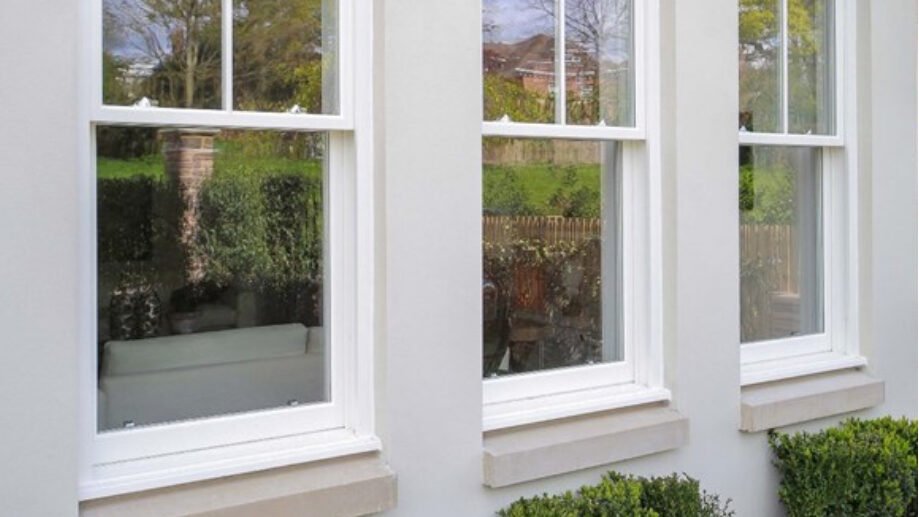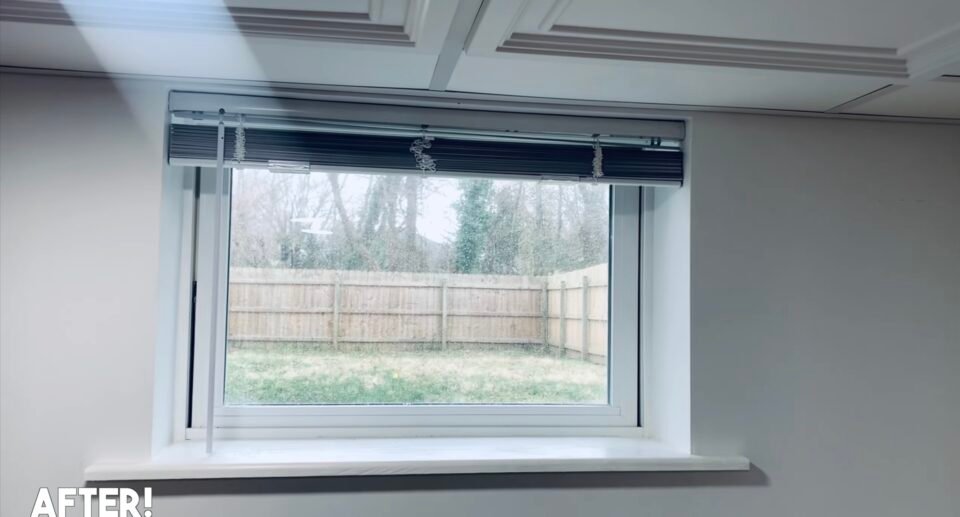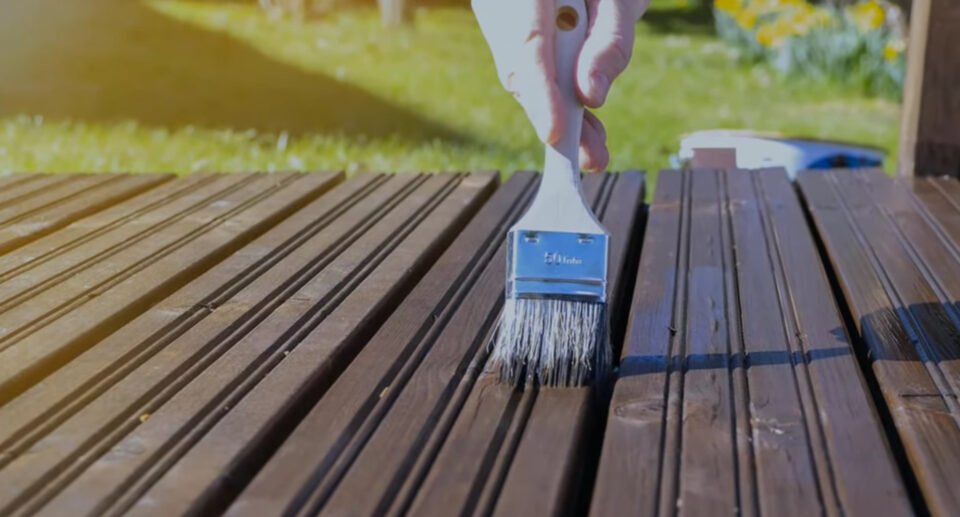What is a Window Sash: Understanding Its Function and Importance

Table of Contents
ToggleWhat is a window sash? A window sash is an essential component of a window that is often unnoticed yet plays a critical role in both the function and aesthetics of the window. It is the part where the glass panes are mounted, surrounded by a frame that can either be stationary or movable.
In operable windows, the sash facilitates the opening and closing mechanisms, which can vary depending on the type of window. The sash not only supports and protects the glass but also contributes to the window’s overall energy efficiency.
Understanding the importance of a window sash is vital when it comes to maintenance or considering a replacement. It impacts a window’s appearance, ensures proper operation, and has implications for security and energy sustainability.
Depending on its design and the materials used, a window sash can also reflect the architectural style and history of a building.
Regular inspection and maintenance can extend the life of the sash and, by extension, the window, while keeping your home safe and energy efficient.
Key Takeaways
- The window sash holds the glass and enables opening and closing mechanisms.
- Its maintenance is crucial for window functionality and longevity.
- A sash’s design can significantly affect a window’s energy efficiency.
Basics of a Window Sash
In the realm of windows, the sash plays a pivotal role in both function and design, containing the glass and dictating the operation of the window itself.
Definition and Function
A window sash is the component of a window that involves a frame to hold panes of glass, contributing to both the appearance and functionality of the window. It is not the outer frame fixed to the building, but rather the part that moves within that outer frame—a distinction that’s key in sash windows.
The sash is integral to the design of double-hung or casement windows, where it can slide vertically or pivot to open and close, facilitating ventilation and egress.
Parts of the Sash
The main parts of a window sash include:
- Rails: Horizontal elements forming the top and bottom of the sash.
- Stiles: Vertical elements that provide structural support to the sides.
- Muntins: Bars that may divide the glass into smaller panes, though modern sashes often feature fewer muntins or false muntins for an uninterrupted view.
- Glass Pane: The sheet of glass enclosed by the sash.
Materials and Types
Window sashes can be constructed from a variety of materials:
- Wood: Traditional and customizable, but requires maintenance.
- Vinyl: Resistant to moisture and temperature changes, low maintenance.
- Aluminum: Durable and long-lasting, yet conducts heat and cold.
- Fiberglass: Combines durability with thermal efficiency but at a higher cost.
Beyond materials, window sashes differ by type and functionality:
- Fixed: Non-operable, purely for light and aesthetics.
- Operable: Such as those in double-hung windows, allow for ventilation and cleaning.
Each material and sash type affects the overall function and design of the window, with a direct impact on the window’s appearance and thermal properties.
Types of Sash Windows
Sash windows come in various styles and mechanisms. Understanding the different types is essential for making an informed choice for both functionality and aesthetic appeal.
Single-Hung Windows
Single-hung windows feature two sashes, but only the bottom sash moves vertically, while the upper sash remains fixed. This traditional design is a common choice for homeowners due to its time-tested design and ease of operation.
Double-Hung Windows
In contrast, double-hung windows offer more versatility with both the upper and lower sashes being operable, allowing for better airflow and easier maintenance. This type of window allows a person to open it from either the top or the bottom.
Casement Windows
Casement windows are characterized by their hinged sashes that swing open horizontally, like a door, using a crank or lever. They are known for providing excellent ventilation and a clear view when open.
Sliding Windows
Sliding windows, or horizontal sliders, consist of one or more panels that move left or right along a track. This design is valued for its sleek, contemporary look and the ability to provide significant airflow without protruding into exterior space.
Operation Mechanisms
In the context of window sash functionality, operation mechanisms are integral to how a window is moved and held in place. They vary depending on the type of window and determine the ease and method of operation.
Opening and Closing
For double-hung windows, the opening and closing are typically facilitated by sash cords and pulleys.
The sash cord attaches the window sash to a counterweight hidden within the window frame. This creates a balance that allows for smooth vertical movement, enabling the window to stay open at various heights for ventilation and fresh air.
Counterweight and Pulley
The counterweight and pulley system is often found in traditional wooden sash windows. A counterweight, typically made of lead or steel, balances the weight of the sash, reducing the effort needed to raise or lower the window. These components are usually concealed in the window frame, connected by sash cords running over pulleys.
Crank and Sliding Systems
In the case of casement windows, a crank mechanism is utilized, where the sash is attached to a crank that operates the window, allowing it to open outwardly or to the side.
Sliding windows, conversely, use tracks in which the sash slides side to side or up and down, with tension mechanisms maintaining the desired position. These systems are designed for ease of use, ensuring smooth operation and consistent ventilation control.
Window Sash Maintenance
Proper care and maintenance of window sashes are crucial for preserving their functionality and appearance. Homeowners can avoid common damages such as rot, warping, and scratches through regular inspections and repairs.
Common Issues and Repairs
Window sashes can experience various problems over time.
Rot, often found in wooden windows, is a result of prolonged exposure to moisture. Homeowners should inspect for soft spots or discoloration, which are signs of rot.
Warping can occur in wooden and vinyl windows from temperature fluctuations, hindering proper function. To fix minor warps, homeowners can sometimes apply heat gently to the material and attempt to straighten it.
Aluminum windows may become pitted or corrode, and treatments exist to address these issues without full replacement. Sashes that are damaged or have scratches can often be filled or sanded and refinished.
| Issue | Material | Potential Solution |
|---|---|---|
| Warped Sash | Wood | Heat application, straightening |
| Rot | Wood | Remove damaged sections, fill, seal |
| Scratches | Any | Sanding, filling, refinishing |
| Corrosion | Aluminum | Apply anti-corrosive treatments |
Cleaning and Care
Regular cleaning and maintenance are essential to prevent issues such as mold, mildew, and condensation.
Homeowners should clean their window sashes at least twice a year by wiping down all surfaces with a mild detergent mixed with water.
Wooden windows may also require periodic resealing or repainting to protect against the elements. Vinyl and aluminum windows benefit from lubrication of moving parts to maintain smooth operation.
- Inspect and clean tracks and grooves to ensure they are debris-free.
- Use soft cloths or sponges to avoid scratching surfaces.
- Perform a visual inspection for any signs of moisture penetration.
Replacement and Upkeep
Sometimes window sash replacement is more economical than repair, especially when dealing with severe damage or energy inefficiency.
Homeowners might consider upgrading to newer materials like vinyl, which generally requires less maintenance than wood and does not warp. When choosing to replace sashes, opting for double-glazed or triple-glazed units can further improve energy efficiency.
Always ensure replacements are compatible with the existing frame and sealant is applied correctly to prevent future issues.
Long-term upkeep also includes checking the function of the sashes—they should slide smoothly without sticking or requiring excessive force. If issues persist after cleaning and lubrication, the window may require realignment or hardware replacement.
- Monitor sash cords and weights for signs of wear in older windows.
- Regularly review sealant and weather stripping for gaps or deterioration.
- Consider energy-efficient replacements for improved longevity and reduced maintenance demands.
Energy Efficiency and Sustainability
A window sash plays a crucial role in the overall energy efficiency of a window. It holds the glass panes in place, and when properly designed and maintained, it can contribute significantly to reducing energy bills and enhancing the sustainability of a building.
Energy Efficient Designs
Energy efficient window sashes are integral to a window’s design, affecting how well the window insulates against temperature changes.
Two prominent materials used in sash construction are vinyl and wood.
Vinyl sashes are known for their low maintenance and good thermal resistance, and do not require painting or sealing.
On the other hand, wood windows provide excellent natural insulation but may require more maintenance to prevent weathering and ensure energy efficiency.
Aluminum windows, while strong, typically conduct heat and cold, making them less energy-efficient unless they have a thermal break. Combining materials, using wood-clad aluminum or vinyl, enhances energy efficiency by utilizing the benefits of multiple materials.
Sealing and Glazing
The sealing and glazing of a window sash have a significant impact on its energy performance. Proper seals prevent air leaks, ensuring that heating and cooling efforts remain inside the building. This contributes to lower energy bills and a more comfortable living environment.
Additionally, glazing options are numerous. Double or triple-pane windows are becoming the standard for energy savings. These panes can be filled with inert gases like argon or krypton to further reduce thermal transfer.
The use of Low-E coatings on glass can reflect heat while allowing light to pass through. This enhances the sash’s ability to reduce energy consumption further.
Architectural History and Design
The architectural significance of sash windows is rooted in their historical development and lasting influence on residential window design.
These traditional windows not only provided practical solutions for venting and lighting but also contributed significantly to the architectural beauty and curb appeal of buildings.
Evolution of Sash Windows
Sash windows emerged in the late 17th century, with some of the oldest surviving examples being installed in England in the 1670s.
The design of sash windows evolved over time, improving upon earlier models that utilized pegs or notches. Advances included the introduction of the counterbalanced sash, leveraging counterweights and pulleys concealed within the window frame.
This ingenious mechanism allowed for easier and smoother operation of the window sashes.
Design Components:
- Stiles: The vertical components of the frame.
- Mullions: The structural elements that can divide the window into smaller panes of glass.
Originally, England is often credited with the invention of the sash window, although some suggest a Dutch origin. However, concrete evidence is inconclusive. What remains clear is their rapid spread and popularity, attesting to their architectural and practical value.
Influence on Modern Window Designs
The design principles of sash windows have left a tangible imprint on modern window manufacturing.
Key features of the traditional sash—such as the sliding mechanism that allows a window to move vertically—continue to influence design choices today.
Impact on Modern Features:
- Curb Appeal: Sash windows have long been celebrated for their aesthetic appeal, which remains a prominent consideration in modern window design.
- Residential Windows: The functionality and form of the traditional sash window carry over to contemporary interpretations. These often feature improved materials and insulation techniques while maintaining the characteristic appearance.
Sash windows have proven their durability and desirability through centuries of architectural history. They embody a fascinating blend of technology and style that continues to inform and inspire current window designs.
Window Sash Safety and Security
When considering window sash security, it is important to focus on mechanisms that prevent unauthorized entry and ensure child safety.
Properly maintained sash windows with reliable locking systems provide peace of mind while also allowing safe aeration when necessary.
Preventing Break-Ins
- Sash Locks: The installation of high-quality sash locks is critical in securing a window sash against break-ins. They work by securing the movable sash to the frame, making it more difficult for intruders to force the window open from the outside.
- Reinforced Rails: To further enhance security, window sashes should be fitted with reinforced rails which resist tampering and thwarting attempts to pry the window open.
Child Safety Features
- Window Guards or Stops: These devices prevent the sash from opening beyond a pre-set point, ensuring that children cannot easily fall out of an open window. They provide ventilation without compromising a child’s safety.
- Lockable Sash Fasteners: Ideal for upper-floor windows, lockable sash fasteners can be key-operated. They keep the sash securely closed or allow it to open to a certain height under parental control.
Purchasing and Installation Considerations
When embarking on the purchase and installation of window sashes, homeowners must make informed decisions on their choice of windows, accurate measurements, and budgeting to ensure a successful update to their home’s window components.
Choosing the Right Sash Windows
Homeowners should consider the compatibility of replacement window sashes with their existing window frames to preserve the functionality and aesthetic of their home.
Vinyl window sashes are popular for their longevity and low maintenance, but it’s vital to choose sashes that match the historical character of the house if necessary.
Replacement kits are available for the DIYer, but one should ensure they include all necessary parts such as sash weights, parting beads, and jamb liners.
Measurement and Fitting
Proper measurements are critical to the functionality and energy efficiency of replacement windows.
A homeowner or professional installer must accurately measure the window frame to guarantee a snug fit for the new sash.
These measurements will entail width, height, and depth of the existing frame, along with any unique variables such as sash weight cord placements.
It’s essential for the new sash to operate smoothly on the tracks without gaps that could lead to drafts.
Cost and Estimate
The cost of sash replacement can vary widely based on materials, window size, and whether the installation will be a DIY project or professionally done.
Homeowners should obtain multiple estimates to ensure the most cost-effective solution.
An estimate typically includes the price of the sash, additional window components, and labor. Below is a table outlining potential costs one might anticipate:
| Component | Potential Cost Range |
|---|---|
| Vinyl Window Sash | $100 – $300 |
| Wooden Window Sash | $200 – $500 |
| Installation per Window | $150 – $400 |
| Full Replacement Kit | $250 – $600 |
These figures are an estimate; actual prices will depend on factors such as window size, material choice, and geographic location.
DIY Tips and Installation Guides
When undertaking a window sash replacement, DIYers should start by obtaining accurate measurements of the existing frame.
The width is measured from the inside edge of one jamb to the other, and height from the sill to the head jamb.
These dimensions are crucial when purchasing a sash replacement kit to ensure a proper fit.
Sash Replacement Kit Selection:
A quality kit typically includes vinyl sashes which are preferred for their durability. Look for multi-chambered designs which offer better insulation.
Preparation Steps:
- Remove the old sash by carefully prying it away from the jamb.
- If the old window is counterweight-operated, detach the sash weight cords with caution.
Installation Process:
- Insert the new sash into the frame. For windows with a counterweight system, new sash weight cords will be needed.
- The replacement kits frequently come with all the necessary window parts, ensuring a seamless installation process.
Essential Tools and Materials:
- Tape measure
- Pry bar
- New sash weight cords (if applicable)
- Replacement sash kit
It’s important to follow the supplied instructions with the sash replacement kit, as they include specific details for the brand and model of the window.
A precise installation promises enhanced window performance and longevity.
Throughout the installation, it’s essential to ensure that the sash sits evenly within the frame, operating smoothly without sticking or gaps that could allow for drafts.
With careful attention to detail, the installation of a window sash can be a successful DIY project.
Frequently Asked Questions
This section addresses common inquiries regarding window sashes to clarify their role, functionality, and variation within window designs.
Window sashes are crucial for holding the glass in place within a window frame and can be movable to allow for ventilation and cleaning.
Replacing window sashes typically involves removing the damaged sash and installing a new one, ensuring a tight fit and restored functionality.
There are various types of window sashes, including single-hung, double-hung, fixed, and slider sashes, each offering different operational features.
The window sash is the movable part that holds the glass panes, whereas the window frame is the stationary part that encases the sash and anchors it to the wall.
The sash is the part that encloses and supports the window glass and can be moved to open and close the window if designed to do so.
Most traditional windows include sashes. However, certain contemporary designs may have a fixed pane without a sash or use alternative structures to secure the glass.

Hello, I’m Keith Jones. I’m the author and head of content here of door and window guide. I’ve been in the window and door industry for over 10 years in the UK and North America. I’ve had quite a few roles during my career mainly in Worldwide sales. I’m now semi retired so I thought I’d put my knowledge to good use educating people about all they might need to know about door and window related topics.






